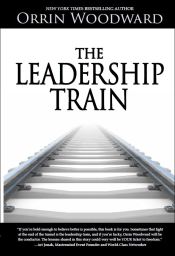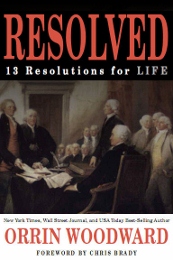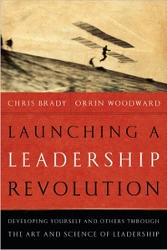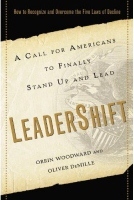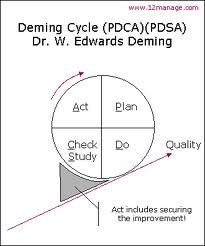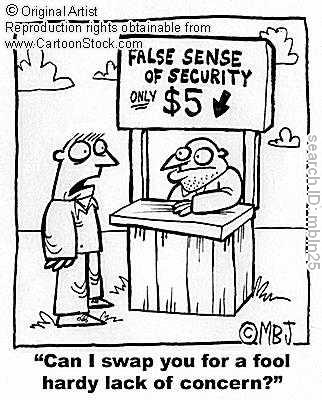Sitting down to read one of my favorite authors (Murray Rothbard), I stumbled across a description of the Austrian School
difference that stunned me, being the best description of the Austrian School Theory of History and Economics that I have ever read. Dr.Joseph Salerno, who wrote this essay, is a professor at Pace University and delivers a powerful essay on Ludwig Von Mises and Murray Rothbard in this introduction to Rothbard’s book on banking. If you would like to understand why economics matters more today than ever before, being concerned with the failure of modern day economic messiahs, then this portion of Salerno’s essay is for you. Leadership matters and you are only qualified to lead in fields in which you have mastered the materials. History, Economics and Leadership go hand in hand if you plan on making a difference in our world today. Enjoy the article and please share your thoughts.
God Bless,
Orrin Woodward
Rothbard’s approach to monetary history does not focus on measurement but on motives. Once the goals of the actors and their ideas about the appropriate means for achieving these goals have been established, economic theory, along with other sciences, is brought to bear to trace out the effects of these actions in producing the complex events and processes of history which are only partially and imperfectly captured in statistical data. This is not to say that Rothbard ignores the quantitative aspects of historical monetary processes. Indeed, his book abounds with money, price, and output data; but these data are always interpreted in terms of the
motivations of those who have contributed to their formation. For Rothbard, a particular price datum is, no less than the Spanish-American War, a historical event, and its causes must be traced back to the subjective aims governing human plans and choices.
In flatly rejecting the positivist approach to economic history, Rothbard adopts the method of historical research first formulated by Ludwig von Mises. In developing this method, Mises correctly delineated, for the first time, the relationship between theory and history. It is Rothbard’s great contribution in this volume—and his earlier America’s Great Depression —to be the first to consistently apply it to economic history. It is worth summarizing this method here for several reasons. First, Mises’s writings on the proper method of historical research have inexplicably been almost completely ignored up to the present, even by those who have adopted Mises’s praxeological approach in economics. Second, familiarity with Mises’s method of historical research illuminates the source and character of the remarkable distinctiveness of Rothbard’s historical writings. In particular, it serves to correct the common but mistaken impression that Rothbard’s historical writings, especially on the origin and development of the U.S. monetary system, are grounded in nothing more substantial than an idiosyncratic “conspiracy theory of history.” Third, it gives us an opportunity to elucidate the important elaboration of Mises’s method that Rothbard contributed and which he deploys to great effect in explicating the topic of this volume. And finally, we find in Mises’s method a definitive refutation of the positivist’s claim that it is impossible to acquire real knowledge of subjective phenomena like human motives and that, therefore, economic history must deal exclusively with observable and measurable phenomena.
To begin with, Mises grounds his discussion of historical method on the insight that ideas are the primordial stuff of history. In his words:
“History is the record of human action. Human action is the conscious effort of man to substitute more satisfactory conditions for less satisfactory ones. Ideas determine what are to be considered more and less satisfactory conditions and what means are to be resorted to to alter them. Thus ideas are the main theme of the study of history.”
This is not to say that all history should be intellectual history, but that ideas are the ultimate cause of all social phenomena, including and especially economic phenomena. As Mises puts it.
“The genuine history of mankind is the history of ideas. It is ideas that distinguish man from all other beings. Ideas engender social institutions, political changes, technological methods of production, and all that is called economic conditions.”
Thus, for Mises, history:
“establishes the fact that men, inspired by definite ideas, made definite judgments of value, chose definite ends, and resorted to definite means in order to attain the ends chosen, and it deals furthermore with the outcome of their actions, the state of affairs the action brought about.”
Ideas—specifically those embodying the purposes and values that direct action—are not only the point of contact between history and economics, but differing attitudes toward them are precisely what distinguish the methods of the two disciplines. Both economics and history deal with individual choices of ends and the judgments of value underlying them. On the one hand, economic theory as a branch of praxeology takes these value judgments and choices as given data and restricts itself to logically inferring from them the laws governing the valuing and pricing of the means or “goods.” As such, economics does not inquire into the individual’s motivations in valuing and choosing specific ends. Hence, contrary to the positivist method, the truth of economic theorems is substantiated apart from and without reference to specific and concrete historical experience. They are the conclusions of logically valid deduction from universal experience of the fact that humans adopt means that they believe to be appropriate in attaining ends that they judge to be valuable.
The subject of history, on the other hand, “is action and the judgments of value directing action toward definite ends.”!” This means that for history, in contrast to economics, actions and value judgments are not ultimate “givens” but, in Mises’s words, “are the
starting point of a specific mode of reflection, of the specific understanding of the historical sciences of human action.” Equipped with the method of “specific understanding,” the historian, “when faced with a value judgment and the resulting action . . . may try to understand how they originated in the mind of the actor, ”it is true that in deriving theorems that apply to the specific conditions characterizing human action in our world, a few additional facts of a lesser degree of generality are inserted into the deductive chain of reasoning. These include the facts that there exists a variety of natural resources, that human labor is differentiated, and that leisure is valued as a consumer’s good.
The difference between the methods of economics and history may be illustrated with the following example. The economist qua economist “explains” the Vietnam War-era inflation that began in the mid-1960s and culminated in the inflationary recession of 1973-1975 by identifying those actions of the Fed with respect to the money supply that initiated and sustained it. The historian, including the economic historian, however, must identify and then assign weights to all those factors that motivated the various members of the Fed’s Board of Governors (or of the Federal Open Market Committee) to adopt this course
of action. These factors include: ideology; partisan politics; pressure exerted by the incumbent administration; the grasp of economic theory; the expressed and perceived desires of the Fed’s constituencies, including commercial bankers and bond dealers; the informal power and influence of the Fed chairman within the structure of governance; and so on.
In short, the economic historian must supply the motives underlying the actions that are relevant to explaining the historical event. And for this task, his only suitable tool is understanding. Thus, as Mises puts it.
“The scope of understanding is the mental grasp of phenomena which cannot be totally elucidated by logic, mathematics, praxeology, and the natural sciences to the extent that they cannot be cleared up by all these sciences.”
To say that a full explanation of any historical event, including an economic one, requires that the method of specific understanding be applied is not to diminish the importance of pure economic theory in the study of history. Indeed, as Mises points out, economics provides in its field a consummate interpretation of past events recorded and a consummate anticipation of the effects to be expected from future actions of a definite kind. Neither this interpretation nor this anticipation tells anything about the actual content and quality of the actual individuals’ judgments of value. Both presuppose that the individuals are valuing and acting, but their theorems are independent of and unaffected by the particular characteristics of this valuing and acting.
For Mises, then, if the historian is to present a complete explanation of a particular event, he must bring to bear not only his “specific
understanding” of the motives of action but the theorems of economic science as well as those of the other “aprioristic,” or non-experimental, sciences, such as logic and mathematics. He must also utilize knowledge yielded by the natural sciences, including the applied sciences of technology and therapeutics. Familiarity with the teachings of all these disciplines is required in order to correctly identify the causal relevance of a particular action to a historical event, to trace out its specific consequences, and to evaluate its success from the point of view of the actor’s goals.
For example, without knowledge of the economic theorem that, ceteris paribus, changes in the supply of money cause inverse changes in its purchasing power, a historian of the price inflation of the Vietnam War-era probably would ignore the Fed and its motives altogether. Perhaps, he is under the influence of the erroneous Galbraithian doctrine of administered prices with its implication of cost-push inflation. In this case, he might concentrate exclusively and irrelevantly on the motives of union leaders
in demanding large wage increases and on the objectives of the “technostructure” of large business firms in acceding to these demands and deciding what part of the cost increase to pass on to consumers. Thus, according to Mises,
“If what these disciplines [i.e., the aprioristic and the natural sciences] teach is insufficient or if the historian chooses an erroneous theory out of several conflicting theories held by the specialists, his effort is misled and his performance is abortive.” But what exactly is the historical method of specific understanding, and how can it provide true knowledge of a wholly subjective and unobservable phenomenon like human motivation? First of all, as Mises emphasizes, the specific understanding of past
events is not a mental process exclusively resorted to by historians. It is applied by everybody in daily intercourse with all his fellows. It is a technique employed in all interhuman relations. It is practiced by children in the nursery and kindergarten, by businessmen in trade, by politicians and statesmen in affairs of state. All are eager to get information about other people’s valuations and plans and to appraise them correctly!
The reason this technique is so ubiquitously employed by people in their daily affairs is because all action aims at rearranging future conditions so that they are more satisfactory from the actor’s point of view. However, the future situation that actually emerges always depends partly on the purposes and choices of others besides the actor. In order to achieve his ends, then, the actor must
anticipate not only changes affecting the future state of affairs caused by natural phenomena, but also the changes that result from the conduct of others who, like him, are contemporaneously planning and acting. Understanding the values and goals of others is thus an inescapable prerequisite for successful action.
Now, the method that provides the individual planning action with information about the values and goals of other actors is essentially the same method employed by the historian who seeks knowledge of the values and goals of actors in bygone epochs. Mises emphasizes the universal application of this method by referring to the actor and the historian as “the historian of the future” and “the historian of the past,” respectively. Regardless of the purpose for which it is used, therefore, understanding aims at establishing the facts that men attach a definite meaning to the state of their environment, that they value this state and, motivated by these judgments of value, resort to definite means in order to preserve or to attain a definite state of affairs different from that which would prevail if they abstained from any purposeful reaction. Understanding deals with judgments of value, with the choice of ends and of the means resorted to for the attainment of these ends, and with the valuation of the outcome of actions per-formed.
Furthermore, whether directed toward planning action or interpreting history, the exercise of specific understanding is not an arbitrary or haphazard enterprise peculiar to each individual historian or actor; it is the product of a discipline that Mises calls “thymology,” which encompasses “knowledge of human valuations and volitions.” Mises characterizes this discipline as
follows:
“Thymology is on the one hand an offshoot of introspection and on the other a precipitate of historical experience. It is what everybody learns from intercourse with his fellows. It is what a man knows about the way in which people value different conditions, about their wishes and desires and their plans to realize these wishes and desires. It is the knowledge of the social environment in which a man lives and acts or, with historians, of a foreign milieu about which he has learned by studying special sources.”
Thus, Mises tells us, thymology can be classified as “a branch of history” since “[i]t derives its knowledge from historical experience.” Consequently, the epistemic product of thymo-logical experience is categorically different from the knowledge derived from experiments in the natural sciences. Experimental knowledge consists of “scientific facts” whose truth is independent of time. Thymological knowledge is confined to “historical facts,” which are unique and non-repeatable events. Accordingly, Mises concludes,
All that thymology can tell us is that in the past definite men or groups of men were valuing and acting in a definite way. Whether they will in the future value and act in the same way remains uncertain. All that can be asserted about their future conduct is speculative anticipation of the future based on specific understanding of the historical branches of the sciences of human action. . . . What thymology achieves is the elaboration of a catalogue of human traits. It can moreover establish the fact that certain traits appeared in the past as a rule in connection with certain other traits.”
More concretely, all our anticipations about how family members, friends, acquaintances, and strangers will react in particular situations are based on our accumulated thymological experience. That a spouse will appreciate a specific type of jewelry for her birthday, that a friend will enthusiastically endorse our plan to see a Clint Eastwood movie, that a particular student will complain
about his grade—all these expectations are based on our direct experience of their past modes of valuing and acting. Even our
expectations of how strangers will react in definite situations or what course political, social, and economic events will take are based on thymology. For example, our reservoir of thymological experience provides us with the knowledge that men are jealous of their wives. Thus, it allows us to “understand” and forecast that if a man makes overt advances to a married woman in the presence of her husband, he will almost certainly be rebuffed and runs a considerable risk of being punched in the nose. Moreover, we may forecast with a high degree of certitude that both the Republican and the Democratic nominees will outpoll the Libertarian Party candidate in a forthcoming presidential election; that the price for commercial time during the televising of the Major League Soccer championship will not exceed the price for commercials during the broadcast of the Super Bowl next year; that the average price of a personal computer will be neither $1 million nor $10 in three months; and that the author of this paper will never be crowned
king of England. All of these forecasts, and literally millions of others of a similar degree of certainty, are based on the specific
understanding of the values and goals motivating millions of nameless actors.
As noted, the source of thymological experience is our interactions with and observations of other people. It is acquired either directly from observing our fellow men and transacting business with them or indirectly from reading and from hearsay, as well as out of our special experience acquired in previous contacts with the individuals or groups concerned. Such mundane experience is accessible to all who have reached the age of reason and forms the bedrock foundation for forecasting the future conduct of others whose actions will affect their plans. Furthermore, as Mises points out, the use of thymological knowledge in everyday affairs is straightforward:
“Thymology tells no more than that man is driven by various innate instincts, various passions, and various ideas. The anticipating individual tries to set aside those factors that manifestly do not play any concrete role in the concrete case under consideration. Then he chooses among the remaining ones.”
To aid in this task of narrowing down the goals and desires that are likely to motivate the behavior of particular individuals, we resort to the “thymological concept” of “human character. ” The concrete content of the “character” we attribute to a specific individual is based on our direct or indirect knowledge of his past behavior. In formulating our plans, “We assume that this character will not change if no special reasons interfere, and, going a step farther, we even try to foretell how definite changes in conditions will affect his reactions.” It is confidence in our spouse’s “character,” for example, that permits us to leave for work each morning secure in the knowledge that he or she will not suddenly disappear with the children and the family bank account. And our saving and investment plans involve an image of Alan Greenspan’s character that is based on our direct or indirect knowledge of his past actions and utterances. In formulating our intertemporal consumption plans, we are thus led to completely discount or assign a very low likelihood to the possibility that he will either deliberately orchestrate a 10-percent deflation of the money supply or attempt to peg the short-run interest rate at zero percent in the foreseeable future.
Despite reliance on the tool of thymological experience, however, all human understanding of future events remains uncertain, to some degree, for these events are generally a complex resultant of various causal factors operating concurrently. All forecasts of the future, therefore, must involve not only an enumeration of the factors that operate in bringing about the anticipated result but also the weighting of the relative influence of each factor on the outcome. Of the two, the more difficult problem is that of apportioning the proper weights among the various operative factors. Even if the actor accurately and completely identifies all the causal factors involved, the likelihood of the forecast event being realized depends on the actor having solved the weighting problem. The
uncertainty inherent in forecasting, therefore, stems mainly from the intricacy of assigning the correct weights to different actions and the intensity of their effects.
While thymology powerfully, but implicitly, shapes everyone’s understanding of and planning for the future in every facet of life, the thymological method is used deliberately and rigorously by the historian who seeks a specific understanding of the motives underlying the value judgments and choices of the actors whom he judges to have been central to the specific event or epoch he is interested in explaining. Like future events and situations envisioned in the plans of actors, all historical events and the epochs they define are unique and complex outcomes codetermined by numerous human actions and reactions. This is the meaning of Mises’s
statement.
“History is a sequence of changes. Every historical situation has its individuality, its own characteristics that distinguish it from any other situation. The stream of history never returns to a previously occupied point. History is not repetitious.”
It is precisely because history does not repeat itself that thymological experience does not yield certain knowledge of the cause of historical events in the same way as experimentation in the natural sciences. Thus the historian, like the actor, must resort to specific understanding when enumerating the various motives and actions that bear a causal relation to the event in question and when assigning each action’s contribution to the outcome a relative weight. In this task, “Understanding is in the realm of history the equivalent, as it were, of quantitative analysis and measurement.” The historian uses specific understanding to try to gauge the causal “relevance” of each factor to the outcome. But such assessments of relevance do not take the form of objective measurements calculable by statistical techniques; they are expressed in the form of subjective “judgments of relevance” based on thymology. Successful entrepreneurs tend to be those who consistently formulate a superior understanding of the likelihood of future events
based on thymology.
The weighting problem that confronts actors and historians may be illustrated with the following example. The Fed increases the money supply by 5 percent in response to a 20-percent plunge in the Dow Jones Industrial Average—or, perhaps now, the Nasdaq—that ignites fears of a recession and a concomitant increase in the demand for liquidity on the part of households and firms. At the
same time, OPEC announces a 10-percent increase in its members’ quotas and the U.S. Congress increases the minimum wage by 10 percent. In order to answer the question of what the overall impact of these events will be on the purchasing power of money six months hence, specific understanding of individuals’ preferences and expectations is required in order to weight and time the influence of each of these events on the relationship between the supply of and the demand for money. The ceteris-paribus laws of economic theory are strictly qualitative and only indicate the direction of the effect each of these events has on the purchasing power of money and that the change occurs during a sequential adjustment process so that some time must elapse before the
full effect emerges. Thus the entrepreneur or economist must always supplement economic theory with an act of historical judgment or understanding when attempting to forecast any economic quantity. The economic historian, too, exercises understanding when making judgments of relevance about the factors responsible for the observed movements of the value of money during historical episodes of inflation or deflation.
Rothbard’s contribution to Mises’s method of historical research involves the creation of a guide that mitigates some of the uncertainty associated with formulating judgments of relevance about human motives. According to Rothbard, “It is part of the
inescapable condition of the historian that he must make estimates and judgments about human motivation even though he cannot ground his judgments in absolute and apodictic certainty. ” But the task of assigning motives and weighting their relevance is rendered more difficult by the fact that, in many cases, historical actors, especially those seeking economic gain through the political process, are inclined to deliberately obscure the reasons for their conduct. Generally in these situations, Rothbard points out, “the actor himself tries his best to hide his economic motive and to trumpet his more abstract and ideological concerns.”
Rothbard contends, however, that such attempts to obfuscate or conceal the pecuniary motive for an action by appeals to higher goals are easily discerned and exposed by the historian in those cases “where the causal chain of economic interest to action is simple and direct. ” Thus, for example, when the steel industry lobbies for higher tariffs or reduced quotas, no sane adult, and certainly no competent historian, believes that it is doing so out of its stated concern for the “public interest” or “national security.”
Despite its avowed motives, everyone clearly perceives that the primary motivation of the industry is economic, that is, to restrict foreign competition in order to increase profits. But a problem arises in those cases “when actions involve longer and more complex causal chains. ” Rothbard points to the Marshall Plan as an example of the latter. In this instance, the widely proclaimed motives of the architects of the plan were to prevent starvation in Western European nations and to strengthen their resistance to the allures of Communism. Not a word was spoken about the goal that was also at the root of the Marshall Plan: promoting and subsidizing U.S. export industries. It was only through painstaking research that historians were later able to uncover and assess the relevance of the economic motive at work.
Given the propensity of those seeking and dispensing privileges and subsidies in the political arena to lie about their true motives, Rothbard formulates what he describes as “a theoretical guide which will indicate in advance whether or not a historical action will be predominantly for economic, or for ideological, motives.”39 Now, it is true that Rothbard derives this guide from his overall worldview. The historian’s worldview, however, should not be interpreted as a purely ideological construction or an unconscious reflection of his normative biases. In fact, every historian must be equipped with a worldview—an interrelated set of ideas about the causal relationships governing how the world works—in order to ascertain which facts are relevant in the explanation of a particular historical event. According to Rothbard, “Facts, of course, must be selected and ordered in accordance with judgments of
importance, and such judgments are necessarily tied into the historian’s basic world outlook.”
Specifically, in Mises’s approach to history, the worldview comprises the necessary preconceptions regarding causation with which the historian approaches the data and which are derived from his knowledge of both the aprioristic and natural sciences. According to Mises:
“History is not an intellectual reproduction, but a condensed representation of the past in conceptual terms. The historian does not simply let the events speak for themselves. He arranges them from the aspect of the ideas underlying the formation of the general notions he uses in their presentation. He does not report facts as they happened, but only relevant facts. He does not approach the documents without presuppositions, but equipped with the whole apparatus of his age’s scientific knowledge, that is, with all
the teachings of contemporary logic, mathematics, praxeology, and natural science.”
So, for example, the fact that heavy speculation against the German mark accompanied its sharp plunge on foreign-exchange markets is not significant for an Austrian-oriented economic historian seeking to explain the stratospheric rise in commodity prices that characterized the German hyperinflation of the early 1920s. This is because he approaches this event armed with the supply-and-demand theory of money and the purchasing-power-parity theory of the exchange rate.
These “presuppositions” derived from praxeology lead him to avoid any attribution of causal significance to the actions of foreign exchange speculators in accounting for the precipitous decline of the domestic purchasing power of the mark. Instead they direct his attention to the motives of the German Reichs-bank in expanding the money supply. In the same manner, a modern historian investigating the cause and dissemination of bubonic plague in fourteenth-century Europe would presuppose that the blossoming of religious heresy during that period would have no significance for his investigation. Instead he would allow himself to be guided by the conclusions of modern medical science regarding the epidemiology of the disease.
The importance of Rothbard’s theoretical guide is that it adds something completely new to the historian’s arsenal of scientific preconceptions that aids him in making judgments of relevance when investigating the motives of those who promote or oppose specific political actions. The novelty and brilliance of this guide lies in the fact that it is neither a purely aprioristic law like an economic theorem nor an experimentally established “fact” of the natural sciences. Rather it is a sociological generalization grounded on a creative blend of thymo-logical experience and economic theory. At the core of this generalization is the insight
that the State throughout history has been essentially an organization of a segment of the population that forsakes peaceful economic activity to constitute itself as a ruling class. This class makes its living parasitically by establishing a permanent hegemonic or “political” relationship between itself and the productive members of the population. This political relationship permits the rulers to subsist on the tribute or taxes routinely and “legally” expropriated from the income and wealth of the producing class. The latter class is composed of the “subjects” or, in the case of democratic states, the “taxpayers,” who earn their living through the peaceful “economic means” of production and voluntary exchange. In contrast, constituents of the ruling class may be thought of as “tax-consumers” who earn their living through the coercive “political means” of taxation and the sale of
monopoly privileges.
Rothbard argues that economic logic dictates that the king and his courtiers, or the democratic government and its special interest groups, can never constitute more than a small minority of the country’s population—that all States, regardless of their formal
organization, must effectively involve oligarchic rule. The reasons for this are twofold. First, the fundamentally parasitic nature of the relationship between the rulers and the ruled by itself necessitates that the majority of the population engages in productive activity in order to be able to pay the tribute or taxes extracted by the ruling class while still sustaining its own existence. If the ruling class comprised the majority of the population, economic collapse and systemic breakdown would swiftly ensue as the productive class died out. The majoritarian ruling class itself then would either be forced into productive activity or dissolve into internecine warfare aimed at establishing a new and more stable—that is, oligarchic—relationship between rulers and producers.
The second reason why the ruling class tends to be an oligarchy is related to the law of comparative advantage. In a world where human abilities and skills vary widely, the division of labor and specialization pervades all sectors of the economy as well as society as a whole. Thus, not only is it the case that a relatively small segment of the populace possesses a comparative advantage in developing new software, selling mutual funds, or playing professional football, it is also the case that only a fraction of the
population tends to excel at wielding coercive power. Moreover, the law of comparative advantage governs the structure of relationships within as well as between organizations, accounting for the hierarchical structure that we almost invariably observe within individual organizations. Whether we are considering a business enterprise, a chess club, or a criminal gang, an energetic and visionary elite invariably comes to the fore, either formally or informally, to lead and direct the relatively inert majority. This “Iron Law of Oligarchy,” as this internal manifestation of the law of comparative advantage has been dubbed, operates to transform an initially majoritarian democratic government, or even a decentralized republican government, into a tightly centralized State controlled by a ruling elite.
The foregoing analysis leads Rothbard to conclude that the exercise of political power is inherently an oligarchic enterprise. The small minority that excels in wielding political power will tend to coalesce and devote an extraordinary amount of mental energy and other resources to establishing and maintaining a permanent and lucrative hegemonic bond over the productive majority. Accordingly, since politics is the main source of their income, the policies and actions of the members of this oligarchic ruling class will be driven primarily by economic motives. The exploited producing class, in contrast, will not expend nearly as many resources on politics, and their actions in the political arena will not be motivated by economic gain to the same degree, precisely because they are absorbed in earning their livelihoods in their own chosen areas of specialization on the market. As Rothbard explains:
“the ruling class, being small and largely specialized, is motivated to think about its economic interests twenty-four hours a day. The steel manufacturers seeking a tariff, the bankers seeking taxes to repay their government bonds, the rulers seeking a strong state from which to obtain subsidies, the bureaucrats wishing to expand their empire, are all professionals in statism. They are constantly at work trying to preserve and expand their privileges.”
The ruling class, however, confronts one serious and ongoing problem: how to persuade the productive majority, whose tribute or taxes it consumes, that its laws, regulations, and policies are beneficial; that is, that they coincide with “the public interest” or are designed to promote “the common good” or to optimize “social welfare.” Given its minority status, failure to solve this problem exposes the political class to serious consequences. Even passive resistance by a substantial part of the producers, in the form of mass tax resistance, renders the income of the political class and, therefore, its continued existence extremely precarious. More
ominously, attempts to suppress such resistance may cause it to spread and intensify and eventually boil over into an active revolution whose likely result is the forcible ousting of the minority exploiting class from its position of political power. Here is where the intellectuals come in. It is their task to convince the public to actively submit to State rule because it is beneficial to do so, or at least to passively endure the State’s depredations because the alternative is anarchy and chaos. In return for fabricating an ideological cover for its exploitation of the masses of subjects or taxpayers, these “court intellectuals” are rewarded with the power, wealth, and prestige of a junior partnership in the ruling elite. Whereas in pre-industrial times these apologists for State rule were associated with the clergy, in modern times—at least since the Progressive Era in the U.S.—they have
been drawn increasingly from the academy.
Politicians, bureaucrats, and those whom they subsidize and privilege within the economy thus routinely trumpet lofty ideological motives for their actions in order to conceal from the exploited and plundered citizenry their true motive of economic gain. In today’s world, these motives are expressed in the rhetoric of “social democracy” in Europe and that of modern—or welfare-state—liberalism in the United States. In the past, ruling oligarchies have appealed to the ideologies of royal absolutism, Marxism, Progressivism, Fascism, National Socialism, New Deal liberalism, and so on to camouflage their economic goals in advocating a continual aggrandizement of State power. In devising his theoretical guide, then, Rothbard seeks to provide historians with a means of
piercing the shroud of ideological rhetoric and illuminating the true motives underlying the policies and actions of ruling elites throughout history. As Rothbard describes this guide, whenever the would-be or actual proprietors and beneficiaries of the State act, when they form a State, or a centralizing Constitution, when they go to war or create a Marshall Plan or use and increase State power in any way, their primary motivation is economic: to increase their plunder at the expense of the subject and taxpayer. The ideology that they profess and that is formulated and spread through society by the Court Intellectuals
is merely an elaborate rationalization for their venal economic interests. The ideology is the smoke screen for their loot, the
fictitious clothes spun by the intellectuals to hide the naked plunder of the Emperor. The task of the historian, then, is to penetrate to the essence of the transaction, to strip the ideological garb from the Emperor State and to reveal the economic motive at the heart of the issue.
In characterizing the modern democratic State as essentially a means for coercively redistributing income from producers to politicians, bureaucrats, and special interest groups, Rothbard opens himself up to the charge of espousing a conspiracy theory of economic history. But it is his emphasis on the almost universal propensity of those who employ the political means for economic gain to conceal their true motives with ideological cant that makes him especially susceptible to this charge. Indeed, the Chicago School’s theory of economic regulation and the public choice theory of the Virginia School also portray politicians, bureaucrats, and industries regulated by the State as interested almost exclusively in maximizing their utility in the narrow sense, which in many, if not most, cases involves a maximization of pecuniary gain. However, economists of both schools are inured against the charge of conspiracy theory because in their applied work they generally eschew a systematic, thymological investigation of the actual motives of those individuals or groups whose actions they are analyzing. Instead, their positivist methodology inclines them to mechanically impute to real actors in concrete historical circumstances a narrowly conceived utility maximization.
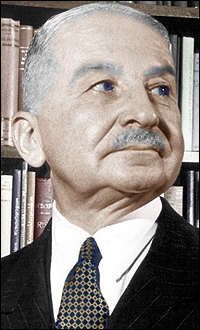 Let’s review one such life, a man by the name of Ludwig Von Mises, an economic leader who stood for truth in an era when most economist stumbled over themselves bowing to a lie. There is an old saying, “Any dead fish can float downstream, but it takes a live one to swim against the current.” Mises swam against the currents, defending free enterprise and classic liberalism when nearly all were chasing after the perks offered by teaching government intervention and control. Many other economist intellectually understood the errors in the Keynesian policies, knowing in there heart and minds that government spending sprees would only lead to massive debt and unemployment, but willingly surrendered their convictions for personal advancement during the Keynesian bubble turned train wreck. Mises, a one man band against his profession initially, refused to go along with the charade, pointing out the logical fallacies, calculating the long term consequences, influencing other economist not to sell their minds for money and prestige. Mises, a prototypical example of a man without a price, lived his life by the motto from Virgil, the Roman poet who wrote, “Tu ne cede malis sed contra audentior ito,” meaning, “do not give in to evil, but proceed ever more boldly against it.” Mises proceeded to do just that for the duration of his long life.
Let’s review one such life, a man by the name of Ludwig Von Mises, an economic leader who stood for truth in an era when most economist stumbled over themselves bowing to a lie. There is an old saying, “Any dead fish can float downstream, but it takes a live one to swim against the current.” Mises swam against the currents, defending free enterprise and classic liberalism when nearly all were chasing after the perks offered by teaching government intervention and control. Many other economist intellectually understood the errors in the Keynesian policies, knowing in there heart and minds that government spending sprees would only lead to massive debt and unemployment, but willingly surrendered their convictions for personal advancement during the Keynesian bubble turned train wreck. Mises, a one man band against his profession initially, refused to go along with the charade, pointing out the logical fallacies, calculating the long term consequences, influencing other economist not to sell their minds for money and prestige. Mises, a prototypical example of a man without a price, lived his life by the motto from Virgil, the Roman poet who wrote, “Tu ne cede malis sed contra audentior ito,” meaning, “do not give in to evil, but proceed ever more boldly against it.” Mises proceeded to do just that for the duration of his long life.